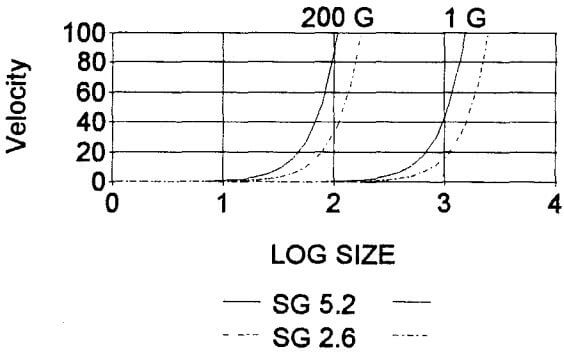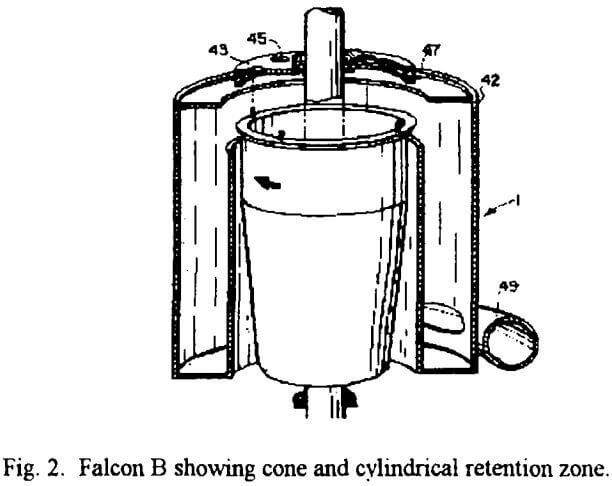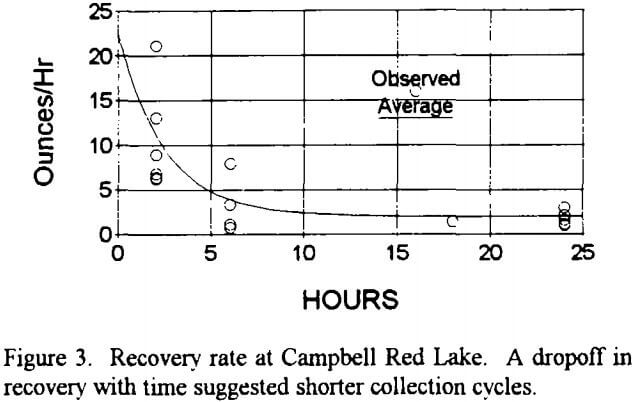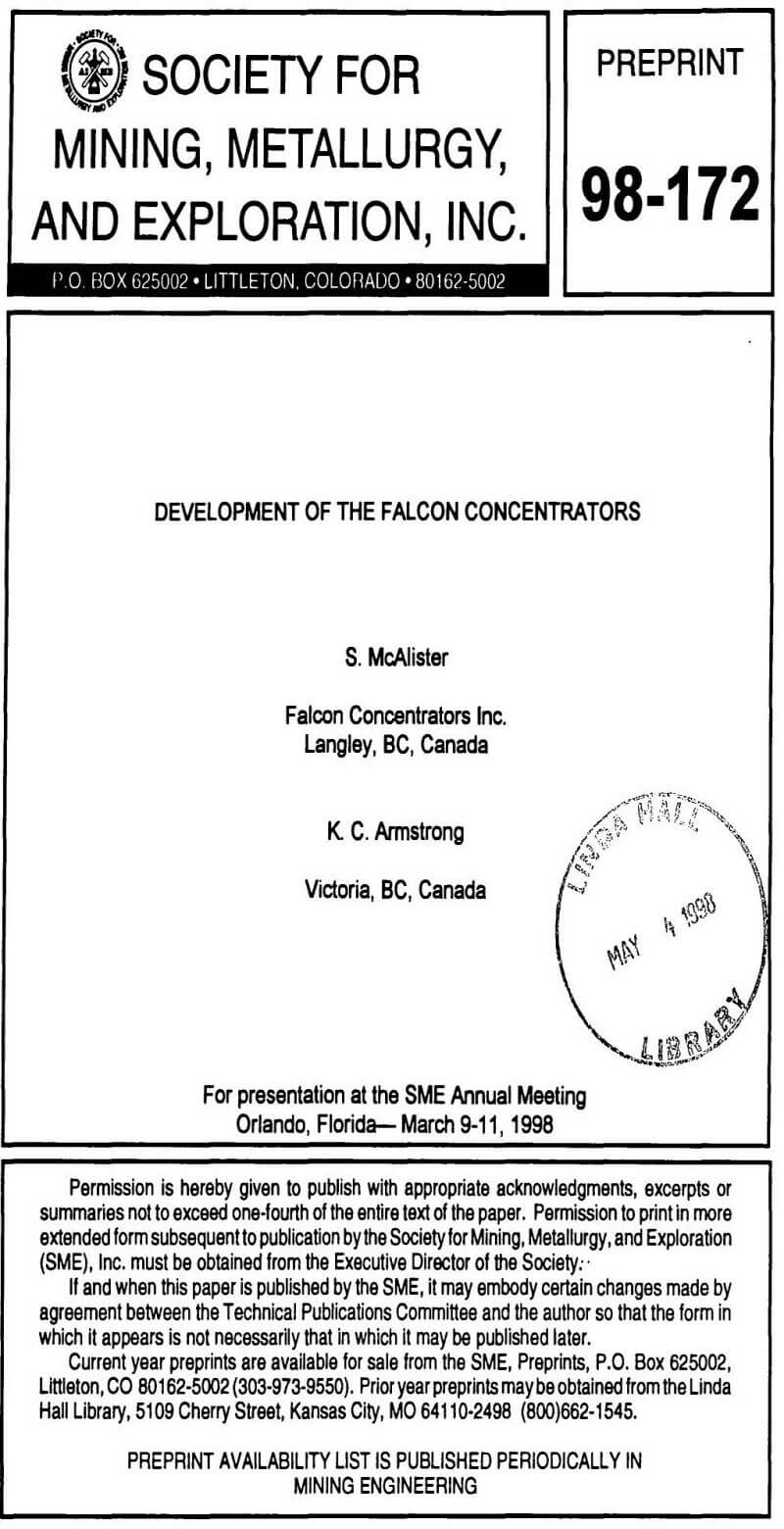Enhanced gravity separation devices (centrifuges) have been patented for over a century but were impractical until recently. The physical laws behind the concept were well understood but engineering had to catch up with the science. This included the development of abrasion resistant materials, the improved design of rotating equipment that allowed higher RPM, and a good understanding of slurry flow, rheology, and the effects of particle shape. Only in the last decade has engineering entered the dawn of enhanced gravity separation. The more we learn, the more we realize how little we know. A parallel can be found in the history of the hydrocyclone which, although in widespread use for decades, experienced an upsurge of study and improvement after 1960 and which continues to receive attention in the literature. Mineral processing technology has advanced across the boards recently and enhanced gravity separation has been part of this evolution. A few things are now known with some certainty.
Capacity
While units have previously been defined by diameter, capacity is more a function of surface area. Two units of close diameter must be assessed by rotor surface for comparison. Within the Falcon SB product line from 104 to 965 mm (4” to 38”) diameter, the surface area increases by D² and rated t/h capacity increases by D2.4.
Efficiency
A constant separation efficiency can be maintained in the same machine at higher throughput by increasing the G’s. With a constant throughput, a lower D50 will be achieved by increasing the G’s, where D50 is the particle density at which 50% of those particles are recovered.
Pulp Acceleration
Pulp must be accelerated to the rotor RPM when fed into an enhanced gravity separator, and acceleration is most practically done by a coaxial impeller. Tests without the impeller have shown a thicker flow up the bowl wall which can only be due to slurry spiraling up at less than full RPM and the available G’s. Only a Falcon machine has an impeller.
Particle Shape vs enhanced Gravity
An observation with early enhanced gravity separators was that flake gold was readily recovered when it was not at 1G although the actual mechanism(s) is unknown. Particle shape effects as observed empirically at 1G appear to differ with these separators.
Background theory
The statements above are based on observations. Gravity theory is complex but a short comment is in order. In all types of enhanced gravity separators the influence on a particle and hence the velocity is proportional to the G force. Stokes law for the terminal velocity of spheres falling in a liquid can be generalized as:
V = K x D² x G x (SGparticle – SGmedium)
where K is a constant related to viscosity and the units used, D is particle diameter, and G is multiple of the earth’s gravitational pull of 9.8m/s. Figure 1 shows the settling velocities for two sets of spherical particles at 1 and 200G derived from this law. Smaller particles at higher gravities develop enough velocity to reach the concentrate during the short retention time.

Figure 1. Change in relative terminal velocity with enhanced gravity for two minerals of 5.2 and 2.6 SGU at one and 200 G.
Model B Enhanced Gravity Separator
Separation Mechanism: The Falcon’s cone, which is called the migration zone, contains a flowing bed with a large amount of interlayer shear. Particle settling velocity is enhanced by the excess gravity, so fine heavy ones arrive at the wall before coarse light ones. Further up where particles begin to compact they are still moving in layers and spaces open between them into which small denser minerals can move. These particles can work their way into the wall layer and may push coarser light ones out of it. The Falcon mechanism is called flowing film separation. Segregation should be complete when the stream arrives at the retention zone. RPM can be adjusted to change the settling rates and compensate for feed changes.
Installations: Blackdome Mines in 1986 became the first commercial application when a B10 254mm (10”) recovered significant gold from shaking table tails in a ball mill/jig/table circuit and produced smelting grade concentrates of up to 30% gold metal in one pass. Overall recovery of gold improved by 6% in this gravity/float mill. This recovery from table tails highlighted the superiority of enhanced gravity.  In 1989 the first B20 (0.5M) became the first Falcon enhanced gravity separator to handle the entire throughput of a mill plus recycled float cleaner tails when used to treat the cyclone overflow at the 400 TPD Johnny Mountain Mine. A conventional jig/table circuit in grinding had been followed by spirals on the cyclone overflow before copper/gold flotation. The spirals recovered one kg for every 4-5 kg of jig gold for a total up to 40%. Spirals increased net recovery by 4-6% but the need for much operator attention was a problem. When they were replaced by a B20, recovered metal rose to one kg of gold per three kg of jig recovery. A changing feed type with lower gravity gold and new flotation strategies prevented quantifying the net effect on recovery. B20 concentrate was cleaned on a B6, tails went to the 150-500 g/t coppper concentrate. Other applications followed with B12 and B20 production units. Lab sized B6’s went to producing mines and to corporate, consultant, and university labs. Tests on different materials and for other applications expanded the knowledge base.
In 1989 the first B20 (0.5M) became the first Falcon enhanced gravity separator to handle the entire throughput of a mill plus recycled float cleaner tails when used to treat the cyclone overflow at the 400 TPD Johnny Mountain Mine. A conventional jig/table circuit in grinding had been followed by spirals on the cyclone overflow before copper/gold flotation. The spirals recovered one kg for every 4-5 kg of jig gold for a total up to 40%. Spirals increased net recovery by 4-6% but the need for much operator attention was a problem. When they were replaced by a B20, recovered metal rose to one kg of gold per three kg of jig recovery. A changing feed type with lower gravity gold and new flotation strategies prevented quantifying the net effect on recovery. B20 concentrate was cleaned on a B6, tails went to the 150-500 g/t coppper concentrate. Other applications followed with B12 and B20 production units. Lab sized B6’s went to producing mines and to corporate, consultant, and university labs. Tests on different materials and for other applications expanded the knowledge base.
Optimization: Testwork using shift data at Johnny Mountain showed constant rate recoveries from 8-24 hours suggesting that the concentrate bed was recovering gold without indications of saturation. This manual machine was tedious to unload so dayshift cleanups were used to reduce labour and to increase security. Cleanup time from the same stream dropped from 2+ hours for the spirals to 15 minutes per day. Gold recovered was 80% minus 50µ. This machine worked with up to 20% sulphides in the feed without adverse effect. A second ball mill was added to the mill and while the B20 worked well on primary cyclone overflow, it was poorer with the secondary cyclone overflow.

This led to a further understanding of the cone angle, finer feeds need higher angles, fixed in later units at 14 degrees. At Campbell Red Lake Gold Mines a calcine stream was scavenged to make furnace feed at up to 60% gold before cyanidation. This gold was all finer than 25µ. Studies showed an initially high metal mass recovery then a long term slower gain (Fig. 3). In the retention zone the concentrate bed is packed but the fine dense mineral can work its way between the coarser particles and stay. The top of this bed is in dynamic balance with scouring by the tails flow but eventually is either covered with oversize tramp or the openings between larger particles become plugged with fines. This initial growth of the bed followed by the slower accumulation is consistent with the pattern in Figure 3. (staff, personal communication)

